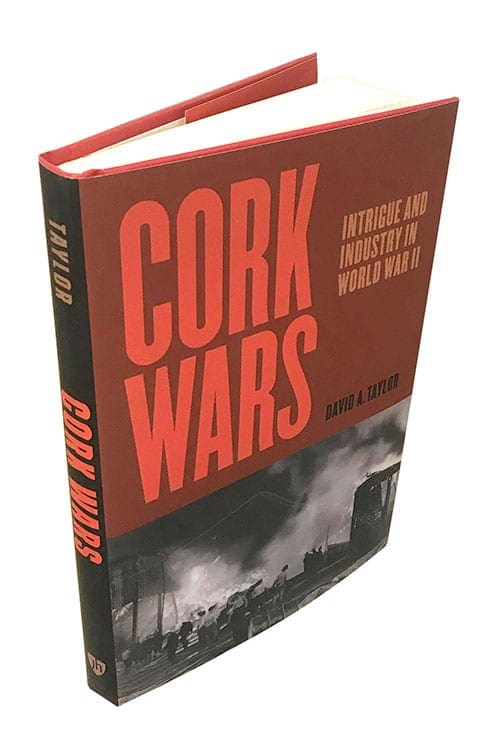
David A. Taylor’s new book, Cork Wars (Johns Hopkins University Press), relates how the buoyant bark of a specific oak, largely indigenous to the Iberian Peninsula, generated surprising wartime significance and intrigue. Taylor teaches in the professional master’s degree Science Writing program that resides in the Krieger School’s Advanced Academic Programs.
Before the advent of plastics, cork was an essential material in the manufacture of products ranging from bottle caps to gaskets. The war to control it was waged from Portugal to California, with Baltimore’s Crown Cork and Seal factory as a key stage in the effort.
Cork Wars traces the fortunes of mogul Charles McManus, whose family owned Crown Cork and Seal, and two other men: Frank DiCara, who grew up in the shadow of the factory and carved out a career there, and Melchor Marsa, who ran the company’s operations in Portugal and Spain and was perfectly placed to be recruited as a spy for the U.S. Office of Strategic Services (the predecessor organization to the CIA).
Cork wasn’t just good business in that era. Unrivaled as a sealant and insulator, it was used in gaskets, bomber insulation, and ammunition and was a vital raw material for the war effort. Even before the United States formally entered World War II, a blazing conflagration at Crown Cork and Seal’s Baltimore factory in 1940 became the subject of an FBI investigation into possible Nazi sabotage.
Despite having Freedom of Information Act requests for records on Marsa denied by the CIA, Taylor searched archives of intelligence cables and interviewed Marsa’s daughter to uncover the businessman-turned-agent’s activities during the war years.
Taylor paints a particularly vivid portrait of wartime Lisbon as a neutral crossroads “where both sides were putting out spies.” After Marsa’s recruitment and arrival, says Taylor, the cables coming from Portugal to intelligence officials in the United States “start showing more about the cork industry, and what black markets meant for dealing in both directions,” says Taylor.
Despite Portugal’s perilous neutrality, cork supplies from the region to the U.S. were imperiled by fierce competition and German submarine warfare. A report from the U.S. Commerce Department in 1941 highlighted U.S. dependence on foreign supplies and called for rationing.
So Cork Crown and Seal aspired to transplant cork oaks—and cork harvesting—to the United States. With the help of botanists and foresters, the “McManus Cork Project” was launched to create a new supply of cork oaks on the home front, and discover existing ones.
The company had short-term success in identifying and harvesting cork oak trees across California, including on the grounds of the Napa State Hospital for the Insane. A single season’s harvest of existing stock in the 1940s netted 5 tons of bark.
At its height, the McManus Cork Project also mailed out millions of acorns to Americans to plant on the home front. The effort did not succeed in creating new supplies of cork oak trees for the industry, but the legacy remains. On a recent trip to California, Taylor saw “trees from that campaign still growing on the [University of California] Davis campus … and a couple of trees on the state capitol grounds in Sacramento, also from that period.”




